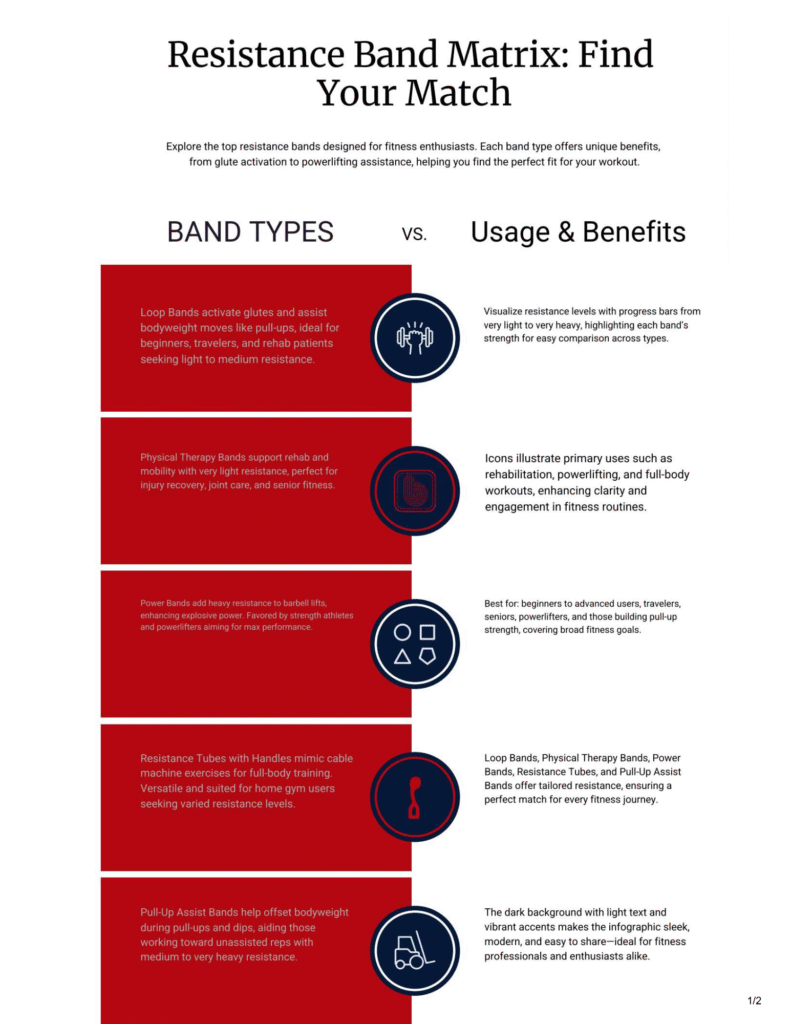The Pocket-Sized Power Plant
Often overlooked as just a warm-up or physical therapy tool, resistance bands are one of the most versatile, affordable, and effective pieces of equipment you can own. They can build muscle, increase strength, and rehabilitate injuries, all while fitting in a drawer. Whether you’re using them to add resistance to bodyweight movements, execute physical therapy exercises, or complete a brutal resistance band chest workout, these elastic powerhouses deserve a prime spot in your fitness arsenal. This guide will show you how to use them to their full potential.
Why You Need Resistance Bands: The Benefits
Portability & Storage:
The most space-efficient fitness tool on the planet. This is the ultimate “home gym” for travelers.
Variable Resistance:
The band gets harder to stretch the more you lengthen it. This matches the natural strength curve of your muscles, maximizing tension at the peak of a movement.
Joint-Friendly:
The elastic tension is easier on joints than heavy, compressive weights, making them perfect for recovery or older athletes.
Exercise Enhancement:
They can make bodyweight exercises harder (e.g., banded pull-ups) and free weight exercises more effective (e.g., banded squats).
Affordability:
A full set of quality bands costs less than a single dumbbell.
The 5 Main Types of Resistance Bands
Loop Bands (aka Mini Bands):
Small, continuous loops. Perfect for lower body activation (glute bridges, monster walks), banded upper body exercises, and adding resistance to pull-ups.
Physical Therapy Bands:
Typically longer, thinner flat bands. Best for rehab, mobility work, and very light resistance.
Power Bands / Figure 8 Bands:
Thick, strong loops used by powerlifters to add variable resistance to barbell lifts like squats and bench press.
Resistance Tubes with Handles:
Feature handles and often come with door anchors. Great for mimicking cable machine exercises like lat pulldowns, chest flyes, and bicep curls.
Pull-Up Assist Bands:
Thick, large loops specifically designed to help you perform pull-ups by taking off a percentage of your body weight.

